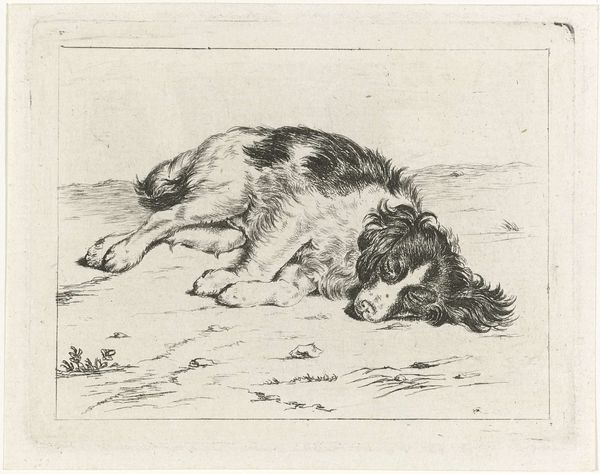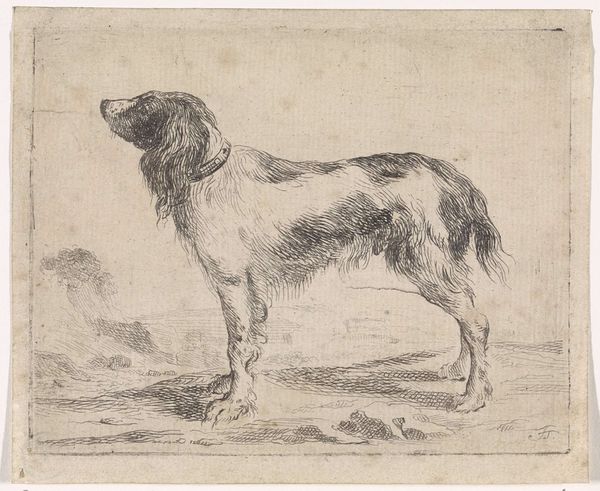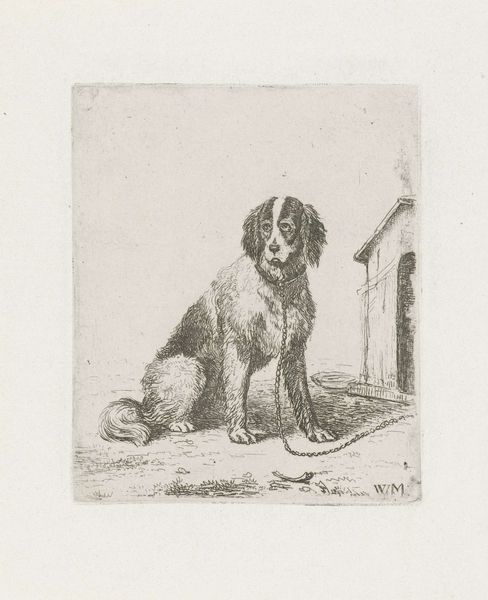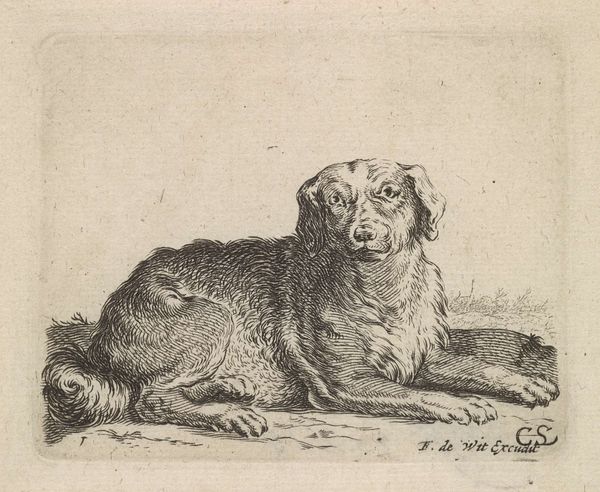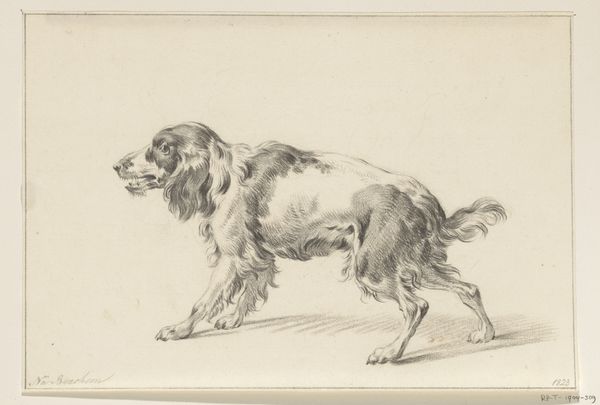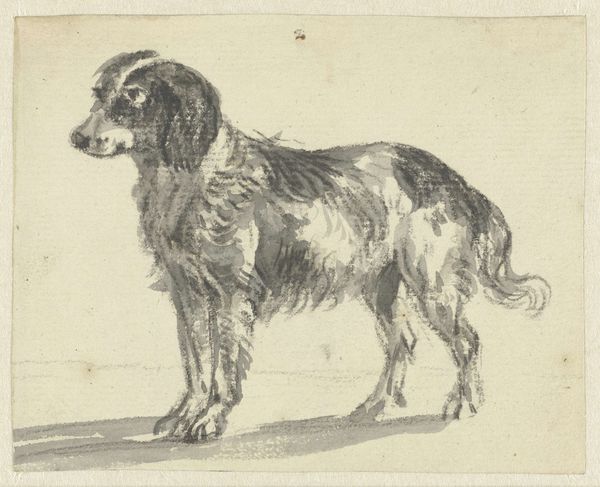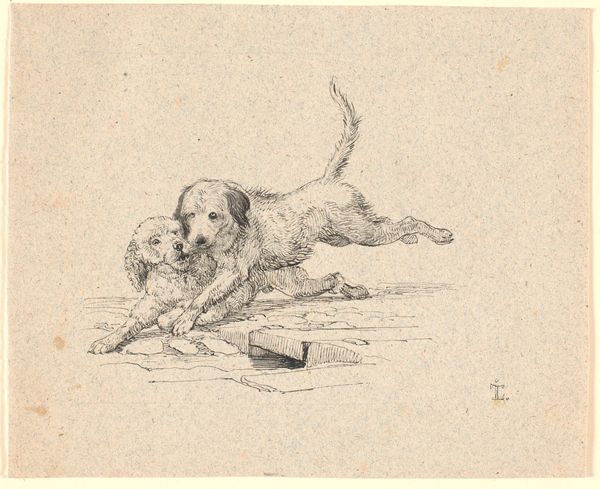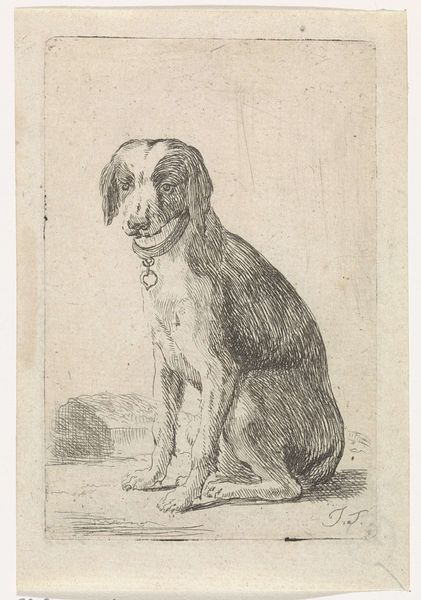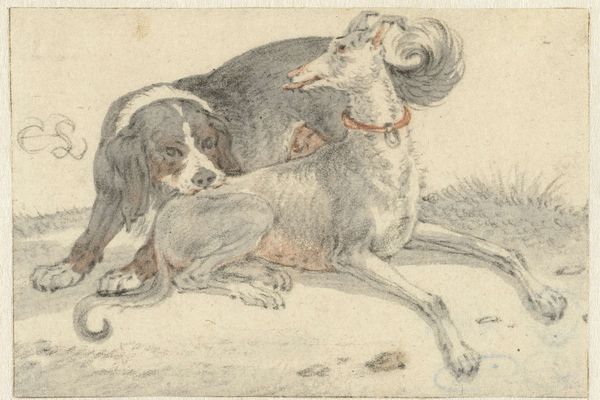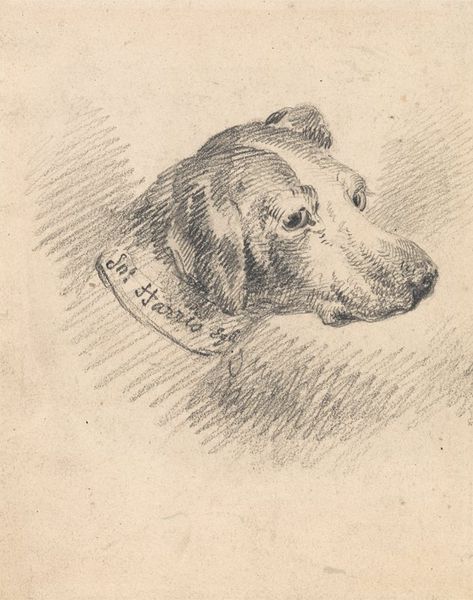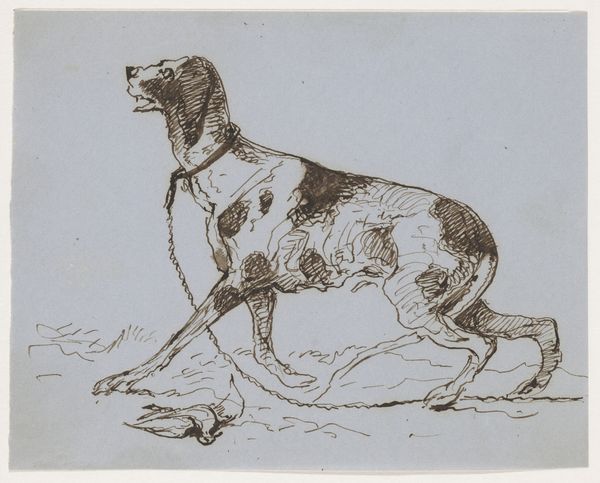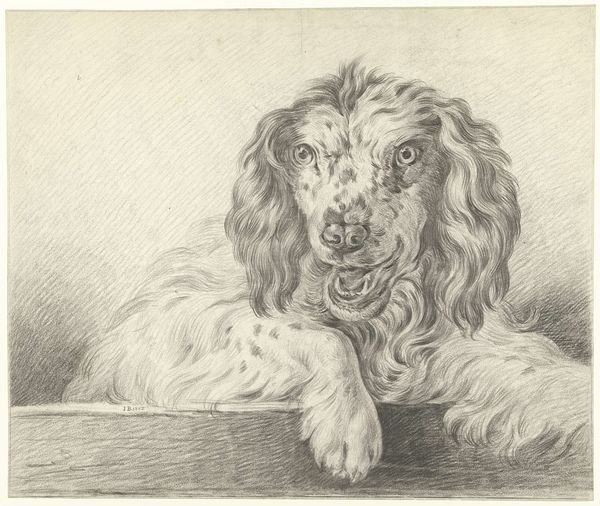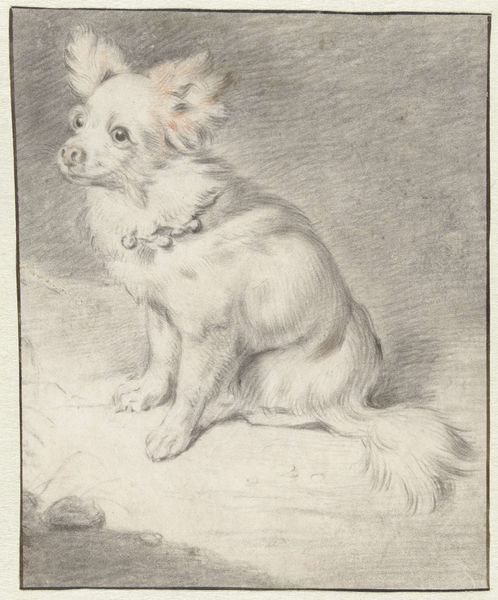
drawing, ink
#
portrait
#
drawing
#
animal
#
pencil sketch
#
dog
#
ink
#
genre-painting
#
realism
Dimensions: height 72 mm, width 106 mm
Copyright: Rijks Museum: Open Domain
Editor: We're looking at "Zittende Hond," or "Sitting Dog," from 1803, created using ink and pencil. The artist is Monogrammist HM. I find the texture created by the layering of lines really compelling, particularly around the dog's fur. What strikes you most about this piece? Curator: It is indeed the modulation achieved through line that commands attention. Notice the strategic variation in line weight and density. In areas defining form, such as the contour of the dog's body and the shadowing beneath, we observe a pronounced darkening through closely packed, assertive strokes. Conversely, in areas requiring less emphasis, like the background, the lines are thinner, more sparsely distributed, thereby creating a subtle sense of depth and atmosphere. How do you think this distribution of line impacts the overall reading of the composition? Editor: I guess it emphasizes the subject; the dog seems more present because of the darker lines and contrasts against the almost empty background. It draws my eye to it. Curator: Precisely. The composition, therefore, can be reduced to its fundamental elements: line, tone, and the figure-ground relationship. What’s intriguing is how such limited means generate a powerful sense of presence. Even without color, the work conveys the dog's texture, weight, and posture with remarkable efficiency. The artist uses very economical marks to describe both the dog and the world it inhabits. Do you perceive any expressive qualities beyond pure representation? Editor: Yes, there is a certain… weariness about the dog’s posture, a relaxed stillness captured through the slight droop of the head and loose fur. Curator: Excellent observation. Formally, that feeling emerges from the artist’s understanding of anatomical rendering and compositional balance. We've moved beyond a simple representational sketch and arrived at something that gestures toward the character of the sitter. Editor: This close looking makes me appreciate the simple mastery of the artist more than I did at first glance! Curator: And in isolating the constituent parts – the line, tone, composition – we unveil the artist's careful calibrations. A useful exercise when encountering any work of art.
Comments
No comments
Be the first to comment and join the conversation on the ultimate creative platform.
